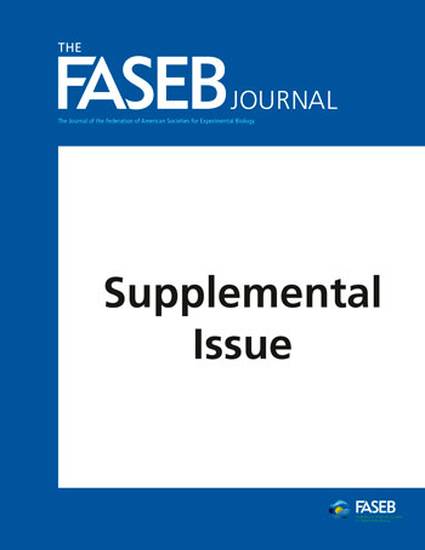
Article
Chronic Reduction of Heart Rate with Ivabradine Does Not Alter the Extent of Myocardial Apoptosis during Post-Infarction Left Ventricular Remodeling in Middle-Aged Rats.
The FASEB Journal
(2016)
Abstract
Heart rate reduction (HRR) induced in post-myocardial infarction (MI) rats by ivabradine, a selective inhibitor of the pacemaker If current, has been shown to attenuate left ventricular (LV) systolic dysfunction without affecting global cardiac remodeling. The functional improvement in post-MI hearts was associated with a marked inhibition of interstitial and perivascular fibrosis, and a significant improvement of myocardial perfusion in the remaining LV myocardium. However, despite an apparent cardioprotective effect of ivabradine-induced HRR on post-MI hearts, the effect of ivabradine treatment on the extent of myocardial apoptosis remained obscure. Accordingly, we designed our current study to determine whether prolonged HRR with ivabradine modifies the level of apoptosis among the cardiac myocytes (CMs) and non-cardiac myocyte (non-CM) cells in the remaining LV myocardium of post-MI hearts. A large transmural MI (greater than 50% of the LV free wall) was induced in 12-month-old male Sprague-Dawley rats by permanent ligation of the left coronary artery. Twenty-four hours after surgery, post-MI rats were randomly assigned into ivabradine-treated (MI+IVA) and corresponding placebo (MI) groups. The sham-operated animals were used as an age-matched control. In MI+IVA groups, the rats were treated with ivabradine via osmotic pumps i.p. in a dose of 10.5 mg/kg/day for 1, 2, 4 and 12 weeks (MI+IVA). At the end of each treatment period, the rats were euthanized and their hearts were collected for evaluation. The histological cross-sections taken from mid-ventricular level of the hearts were triple-labeled with TUNEL technique, an anti-beta-cardiac myosin heavy chain antibody and DAPI nuclear stain. Digital imaging and quantitative image analysis were conducted using an Olympus BX53 fluorescence microscope equipped with a DP72 digital camera and Image-Pro Analyzer 7 software. The extent of apoptotic death among CMs and non-CM cells in surviving myocardium of the LV free wall were determined as the number of TUNEL-positive cells per area of tissue from at least six randomly selected fields (ob. ×20) in each heart. We found that both CMs and non-CM cells in the remaining LV myocardium have undergone apoptotic death during 12 post-MI weeks. Nevertheless, the number of TUNEL-positive non-CM cells were always predominant over CMs at all time periods. We also determined that between 1 and 12 weeks after surgery, both post-MI groups showed a progressive increase in apoptotic CMs (MI rats: 0.2±0.1 vs. 1.6±0.5 cells/mm2, P≤0.01; MI+IVA rats: 0.3±0.1 vs. 1.8±0.4 cells/mm2, P≤0.01) as well as non-CM cells (MI rats: 4.0±1.1 vs. 8.1±0.8 cells/mm2, P≤0.01; MI+IVA rats: 2.9±0.4 vs. 6.6±1.1 cells/mm2, P≤0.01). However, the comparisons between MI and MI+IVA rats did not reveal significant differences in the extent of TUNEL-positive cells among both CMs and non-CM cells, except 2 weeks after MI. Therefore, our findings are the first to demonstrate that a prolonged period of HRR by ivabradine had no substantial effect on the level of myocardial apoptosis within surviving LV myocardium of post-MI middle-aged rats.
Disciplines
Publication Date
April 1, 2016
Citation Information
Iosif Kandinov, Robert J. Tomanek and Eduard Dedkov. "Chronic Reduction of Heart Rate with Ivabradine Does Not Alter the Extent of Myocardial Apoptosis during Post-Infarction Left Ventricular Remodeling in Middle-Aged Rats." The FASEB Journal Vol. 30 Iss. Supplement 1 (2016) p. 939.1 Available at: http://works.bepress.com/edward-dedkov/81/
